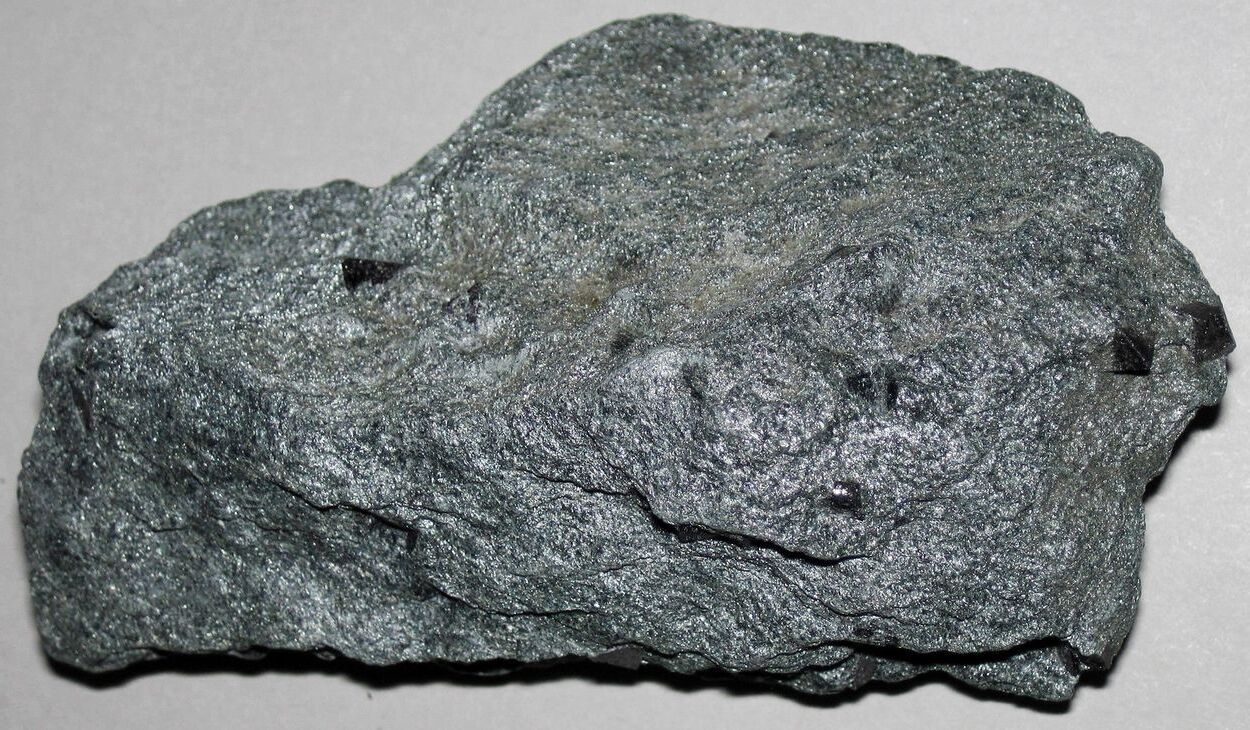
Chlorite is a fascinating mineral group that often goes unnoticed. Found in a variety of geological settings, these minerals play a crucial role in understanding Earth's processes. But what exactly makes chlorite so special? Chlorite minerals are typically green, but their color can range from white to yellowish-green, depending on their composition. They are commonly found in metamorphic rocks and can also appear in hydrothermal veins. These minerals are essential for geologists as they provide clues about the temperature and pressure conditions during rock formation. Chlorite is not just a single mineral but a group of related minerals, each with unique properties. From its role in soil fertility to its industrial applications, chlorite has a wide range of uses that impact our daily lives. Ready to dive into the world of chlorite? Let's explore 50 intriguing facts about this versatile mineral.
Key Takeaways:
- Chlorite is a green mineral found in rocks, used in industry, and can form beautiful crystals. It's safe, but inhaling its dust can cause breathing problems. It's also helpful in studying environmental changes.
- Chlorite minerals have various uses, from paper production to studying rock formations. They can even help remove impurities from water and improve soil fertility. But be careful not to inhale their dust!
What is Chlorite?
Chlorite is a group of minerals that are often green and found in metamorphic rocks. These minerals are important in geology and have various uses in industry.
- Chlorite minerals are part of the phyllosilicate group.
- They are typically green, but can also be yellow, white, or red.
- The name "chlorite" comes from the Greek word "chloros," meaning green.
- Chlorite minerals are often found in metamorphic rocks like schist and gneiss.
- They form under low to moderate temperature and pressure conditions.
- Chlorite can also be found in hydrothermal veins.
- These minerals are often associated with other minerals like quartz, feldspar, and mica.
- Chlorite has a flaky or platy appearance.
- It has a Mohs hardness of 2 to 2.5.
- Chlorite minerals have a monoclinic crystal system.
Chemical Composition of Chlorite
Chlorite minerals have a complex chemical composition that can vary widely. This makes them interesting to scientists and useful in various applications.
- Chlorite's general chemical formula is (Mg,Fe,Li)6AlSi3O10(OH)8.
- They contain elements like magnesium, iron, aluminum, silicon, and oxygen.
- The exact composition can vary depending on the specific type of chlorite.
- Some chlorite minerals contain lithium.
- Iron-rich chlorite is called chamosite.
- Magnesium-rich chlorite is known as clinochlore.
- Chlorite can also contain trace amounts of other elements like manganese and nickel.
- The presence of different elements can affect the color and properties of chlorite.
- Chlorite minerals are often studied using X-ray diffraction.
- Chemical analysis of chlorite can provide information about the conditions under which it formed.
Uses of Chlorite
Chlorite minerals have various uses in industry and science. They are valuable for their unique properties and versatility.
- Chlorite is used as a filler in the paper industry.
- It is also used as a pigment in paints and coatings.
- Chlorite minerals are used in the production of ceramics.
- They are important in the study of metamorphic rocks.
- Chlorite can be used as an indicator of metamorphic conditions.
- It is also used in the oil and gas industry to study reservoir rocks.
- Chlorite minerals can be used to remove impurities from water.
- They are sometimes used in the production of fertilizers.
- Chlorite can be used as a catalyst in chemical reactions.
- It is also used in the production of certain types of glass.
Interesting Facts about Chlorite
Chlorite minerals have some unique and interesting properties that make them stand out. Here are some fun facts about chlorite.
- Chlorite can form beautiful, intricate crystal structures.
- Some chlorite minerals are fluorescent under UV light.
- Chlorite can be found in meteorites.
- It is sometimes used as a gemstone.
- Chlorite can form pseudomorphs, where it replaces another mineral while retaining the original shape.
- It can also form in association with gold deposits.
- Chlorite is often found in alpine-type fissures.
- It can be used to study past geological conditions.
- Chlorite minerals can be used to estimate the temperature and pressure of rock formation.
- They are often used in thin section petrography to study rock textures.
Environmental and Health Aspects of Chlorite
Chlorite minerals can have both positive and negative impacts on the environment and human health. Understanding these aspects is important for their safe use.
- Chlorite is generally considered to be non-toxic.
- However, inhaling dust from chlorite minerals can cause respiratory issues.
- Chlorite can be used to remove heavy metals from contaminated water.
- It is also used in some water treatment processes.
- Chlorite minerals can help stabilize soil and prevent erosion.
- They can also be used to improve soil fertility.
- Chlorite can be used to study environmental changes over time.
- It is important to handle chlorite minerals with care to avoid inhaling dust.
- Chlorite minerals can be used to study the impact of human activities on the environment.
- They can also be used to monitor the health of ecosystems.
Final Thoughts on Chlorite
Chlorite is more than just a mineral. Its unique properties and uses make it a fascinating subject. From its role in geology to its applications in industry, chlorite has proven its worth. This mineral's ability to indicate metamorphic conditions helps geologists understand Earth's history. Its use in water purification and as a disinfectant showcases its practical benefits. Chlorite's presence in various rocks and soils also highlights its importance in natural processes. Whether you're a student, a professional, or just curious, knowing about chlorite adds a layer of appreciation for the natural world. So next time you come across this greenish mineral, you'll know it's not just a pretty face; it's a key player in many scientific and practical fields. Keep exploring and stay curious about the wonders around us.
Frequently Asked Questions
Was this page helpful?
Our commitment to delivering trustworthy and engaging content is at the heart of what we do. Each fact on our site is contributed by real users like you, bringing a wealth of diverse insights and information. To ensure the highest standards of accuracy and reliability, our dedicated editors meticulously review each submission. This process guarantees that the facts we share are not only fascinating but also credible. Trust in our commitment to quality and authenticity as you explore and learn with us.


